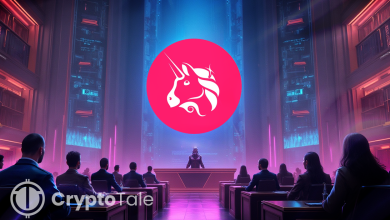Google Unveils AI Payments Protocol with Stablecoin Support

- Google launches AP2, an open-source AI payments protocol with stablecoin support.
- Coinbase and over 60 partners back Google’s push to merge AI agents with crypto payments.
- Stablecoins gain momentum as AI agents adopt them for secure, real-time digital transactions.
Google has introduced an open-source standard called the Agent Payments Protocol (AP2) that enables artificial intelligence (AI) agents to send and accept payments. The project involves incentives on both mainstream payment systems, like credit and debit cards, and on digital assets like stablecoins.
The announcement represents a further move of Google into agentic commerce, the follow-up to the Agent-to-Agent (A2A) Protocol released earlier this year. By extending A2A into payments, AP2 enables AI systems to transact securely on behalf of users while ensuring proper authorization, authenticity, and accountability.
James Tromans, head of Web3 at Google Cloud, stated that the protocol was designed to support both heritage and existing payment rail capabilities as well as forthcoming capabilities such as stablecoins.
Google Collaboration with Coinbase and industry partners
Reportedly, the firm has collaborated with more than 60 global organizations, including American Express, Salesforce, PayPal, Mastercard, and Etsy. Further, it plans to add support for stablecoins and other crypto assets by working closely with Coinbase and the Ethereum Foundation.
Erik Reppel, head of engineering at Coinbase’s developer platform, stated that the partnership with Google would enhance teh interoperability of its systems. “We’re all working to figure out how to make AI transmit value to each other,” he told Fortune.
In addition to Coinbase, companies such as Crossmint, BVNK, and DLocal highlighted the role of stablecoins in overcoming the limitations of traditional financial infrastructure. BVNK’s chief technology officer, Donald Jackson, stated that stablecoins provide an obvious solution to the scaling challenges that agentic systems are already facing with legacy financial infrastructure.
Stablecoins and crypto at the center of AI commerce
AP2’s design emphasizes flexibility, allowing payments to occur across credit cards, bank transfers, and digital assets. Google also affirmed that it supports blockchain, cryptocurrencies, and stablecoins in the protocol, which is a major achievement in integrating AI and blockchain.
Coinbase noted that stablecoin payments could be enhanced by integrating x402 into AP2, thus expanding crypto’s utility in real-world commerce. Similarly, Crossmint emphasized that developers can now enable AI agents to purchase goods using both credit cards or stablecoins.
The protocol also lays the groundwork for agent-based crypto payments through the A2A x402 extension. This production-ready upgrade allows AI agents to use programmable assets across wallets and exchanges. Mesh, a participating company, stated that its technology simplifies the process by providing agents with seamless access to over 100 tokens and efficient transaction routes.
Related: Google Cloud Unveils GCUL, L1 Blockchain for Institutional Finance
Broader industry context and implications
The news indicates the increasing trend of integrating stablecoins into AI-driven applications. Pegged to the U.S dollar, stablecoins have been considered credible settlement tools. This has also recently been given more regulatory clarity in the U.S. GENIUS Act, and industry leaders like Galaxy Digital CEO Mike Novogratz have vowed that AI agents would soon be the most significant consumers of stablecoins.
The Ethereum Foundation also underscored stablecoins’ role in AI development. It points to technical frameworks, such as Ethereum Improvement Proposal 3009, which could allow AI agents to perform automated stablecoin transactions.
Google’s move comes as part of the company’s overall program of developing financial-grade blockchain infrastructure, including the Google Cloud Universal Ledger pilot project. This project, focused on programmable settlement systems for institutions, implies that AP2 is part of a larger solution to bridging traditional finance and digital assets.




